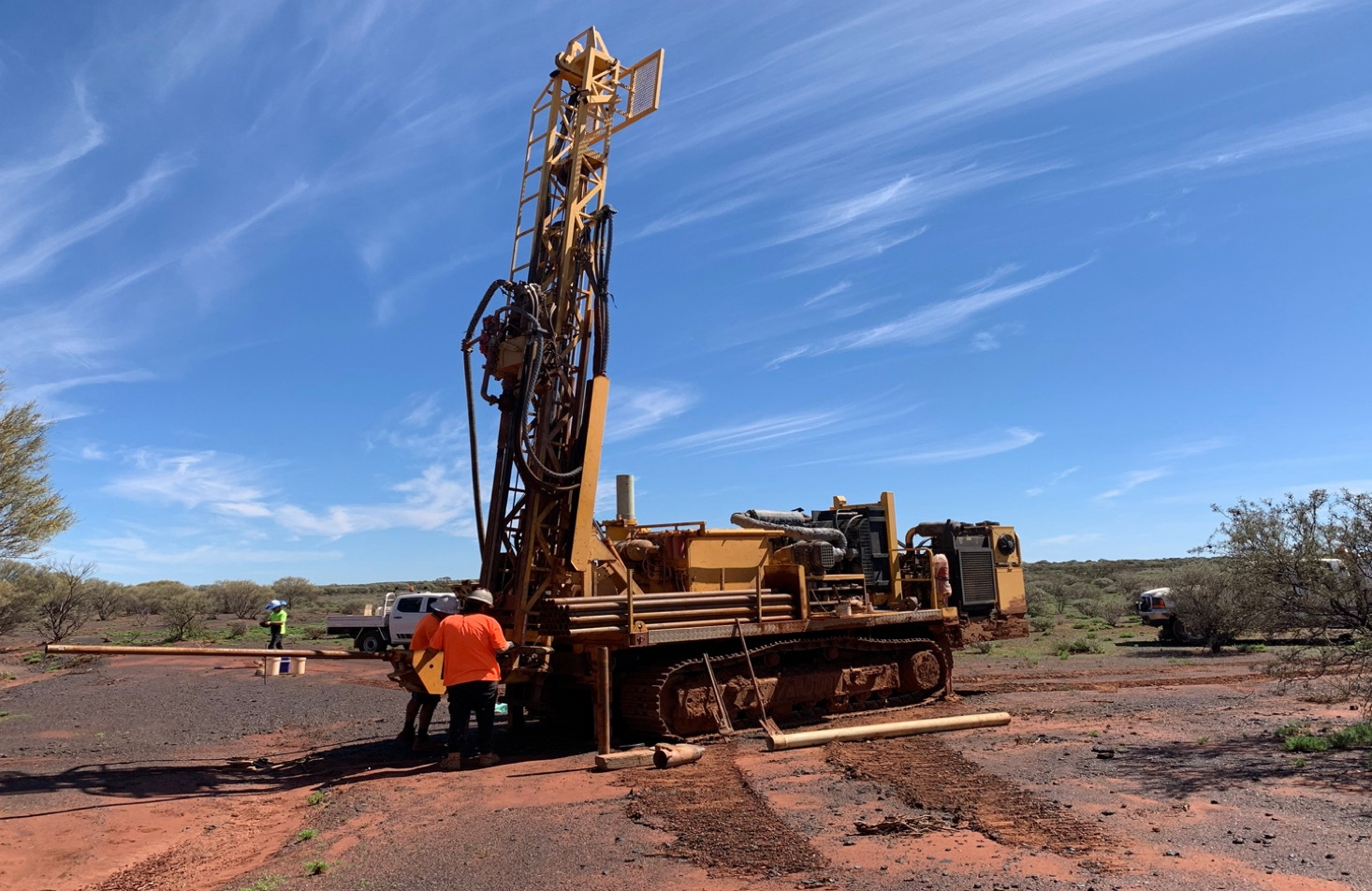Why alarm bells should be ringing around ‘forgotten’ battery metal manganese

How will the battery world answer the manganese call? Pic: Nico De Pasquale Photography/Moment, via Getty Images
When the European Union updated its list of critical minerals in March, it put manganese front and centre – incorporating the mineral into the fold alongside copper and nickel.
The copper and nickel narratives are relatively well known to investors – copper’s conductive properties make it critical to the infrastructure required for a green future, while nickel is well known to be a critical component of the batteries that power EVs.
What about manganese? Ever the supporting character, the mineral’s investment narrative is a little less developed. But with its inclusion on the EU critical minerals list, maybe it’s time manganese got a little more attention of its own.
That’s one of the things New York-based global manganese expert Andrew Zemek, a special advisor at the world’s pre-eminent high-purity manganese market research firm CPM Capital, is setting out to do.
Zemek has an extensive background in battery and specialty metals and refers to manganese as the forgotten EV metal with huge upside.
Forgotten battery metal
Speaking with Stockhead from London, Zemek was quick to highlight that manganese is not a material in short supply.
But he also pointed out that not all manganese is fit for processing downstream to a material suitable for battery applications.
That’s a big deal. Almost half of today’s lithium-ion batteries include manganese, and CPM’s projections have that figure jumping above 60% by 2030.
“Because manganese is ubiquitous and cheap it is taken for granted, and gives battery makers a false sense of security,” Zemek said.
“But in reality, the world needs more new high purity manganese plants than the number of mines or plants required for any other battery metal.
“A total of 103 new projects are required of an average size by today’s standards, with each producing about 30,000t of high purity manganese sulphate.
“The world has about 15 of those in the pipeline, nine of which are in China.
“I think these numbers go to show how forgotten it is. They are shouting about all these other metals – every Tom, Dick and Harry is aware of the shortage of lithium and the problems with cobalt, we hear about nickel and graphite.
“Nobody is talking about manganese, and that’s not right, because it’s currently right at the heart of current nickel manganese cobalt (NMC) batteries.”
Since September 2020, no fewer than seven major automakers have committed themselves to manganese-based batteries – Stellantis, Ford, Volkswagen, Renault, Tesla, Nissan and Mitsubishi.
That group makes 31 million cars on average each year. And their batteries will require high purity manganese sulphate.
What is high purity manganese sulphate?
The looming bottleneck in the manganese market exists between the mining of manganese ore and the production of high purity manganese sulphate monohydroxide (MSM) – a product currently, unsurprisingly, dominated by China.
CPM Group reports that in 2022, 98% of the world’s high purity manganese sulphate monohydroxide was produced in the Asian manufacturing powerhouse, which accounts for 92% of the world’s processing capacity for the product.
It’s not easy to produce MSM to a standard accepted by carmakers. The difference between standard MSM and high purity MSM is often less than 1% manganese – standard MSM is marketed commercially as minimum 31% manganese, while high purity MSM is minimum 32% manganese.
With current technology, only the latter can be used in battery manufacture.
MSM can also include 17 other elements – impurities accepted to some level by battery makers, with no industry standard to measure by.
“When we talk about MSM, we are no longer talking about a commodity,” Zemek said.
“There are many battery makers, and all of them have different specifications – they will differ by parts per million of different impurities, and the output will command different prices.
“The devil is in the detail, and the detail in this instance is impurities. The battery makers have a list of 17 elements which can be present in MSM to some degree but are prescribed to upper limits which vary from maker to maker.
“These cannot be broken, because otherwise the material will spoil the performance of the battery.”
It’s a complex market – one which requires a high level of expertise and consistency of output.
Sounds complicated. Is it worth it?
Resoundingly yes – high purity manganese sulphate looms as one of the key drivers of the battery metals market in the years ahead.
Zemek believes it could become even more important, owing to its price stability against the ever-volatile cobalt market.
By weight, the cathode in an NMC-622 battery is currently 17% manganese and 18% cobalt.
By cost in 2022, manganese accounts for just 1% of the total cost of the cathode materials in a battery, against cobalt’s 21%. Owing to fluctuating prices, in 2019 cobalt accounted for 37% of the overall cathode material cost of an NMC-622.
The natural response from carmakers is to try engineer the requirement on volatile cobalt out of the battery, according to Zemek. The logical replacement could well end up being high purity manganese sulphate.
As Europe and the EU begin to turn away from China in favour of more ‘friendly’ supply chains, the question of where this manganese product will come from looms large.
“The battery producers will ultimately have to buy from China, but whatever else they can buy before they go to China will be highly commended, and rewarded with tax breaks, incentives and so on,” Zemek said.
“We think that means the future producers in South Africa, in Australia and other allied nations stand a very good chance of delivering to Europe and the United States.”
Manganese in Australia
Australian manganese has had its moment in the sun in recent years, albeit overshadowed to a great extent by its higher profile battery material cousins.
Still, there are several ASX-listed manganese plays in the space at varying levels of development. Here are some of the standout plays in the space.
Element 25 (ASX:E25)
With a market cap in touching distance of $150 million, E25 and its Butcherbird manganese project in WA’s Pilbara represent a standout in the space.
Butcherbird is Australia’s largest onshore manganese resource, measuring 263 million tonnes at 10% manganese for 20.8Mt contained Mn.
Just this month, the company released a feasibility study into a high purity manganese processing facility which would turn the manganese concentrate from the Pilbara project into high purity MSM required for the battery market.
That proposed facility would be located in the US state of Louisiana – tapping the domestic battery supply chain sentiment prevalent in the States at the moment and potentially making E25 “the leading US source of HPSMSM”.
The feasibility study says funding of around US$293 million ($437 million), excluding working capital and finance costs, would be required to achieve first production from the processing facility.
E25 says it is now working with offtake partners and government financing agencies to fully fund the project in a timeframe that satisfies offtake requirements for first production by 2025.
Firebird Metals (ASX:FRB)
Firebird says it’s building Western Australia’s next major manganese operation, at the advanced, flagship Oakover project where it has an estimated mineral resource of 176.7Mt at 9.9% manganese.
That resource is complemented by the Hill 616 project 35km down the road, which has an inferred resource of 57.5Mt at 12.2% Mn – combining for a total resource estimate of 234Mt of ore.
Firebird completed a manganese concentrate scoping study at Oakover last year which forecast a 10-year mine life based solely on the Sixty Sixer deposit at the project.
Metallurgical testwork has been conducted on ore via a HPMSM program and delivered production of a >99.8% purity manganese sulphate monohydrate crystal and confirmed Oakover manganese ore could be processed into battery grade HPMSM.
The Evan Cranston-chaired company is focused on optimising its process flowsheet development, and a HPMSM scoping study is expected thereafter.
Accelerate Resources (ASX:AX8)
This month, Accelerate announced it had produced +99.9% purity HPMSM crystals from its Woodie Woodie North manganese project in WA.
That was done on a testwork level, designed to demonstrate the amenability of the ore from the project to produce the product.
Accelerate is pursuing a high purity manganese strategy with the goal of producing its own HPMSM from Woodie Woodie North feedstock, and is currently developing processing flowsheets in line with that goal.
Last month Accelerate signed a heads of agreement with US-based RedoxBlox to explore the supply of manganese products for patented zero-carbon geochemical energy storage technology – a step in its goal of becoming a downstream integrated business.
In tandem, AX8 says it intends to develop a direct shipping ore project at Woodie Woodie North which will provide product for the steel manufacture industry.
An aggressive drilling program designed to target resources and generate new discoveries is also planned this year.
Pantera Minerals (ASX:PFE)
While we’re on the topic of drilling, explorer Pantera Minerals put rigs on the ground at its highly prospective Weelarrana manganese project last week.
The company is undertaking a 2500m phase 2 RC campaign of up to 100 drill holes, designed to test high grade outcropping manganese mineralisation at Mn Areas 2, 3 and 4, and infill and extend existing drilling at Mn Area 1.
CEO Matt Hansen said the company was thrilled to be exploring at Weelarrana, also in the Pilbara and on the same manganiferous shales known to host economic mineralisation at E25’s Butcherbird and FRB’s Hill 616 projects.
“We are excited to have commenced phase 2 drilling at Weelarrana, which is the culmination of a substantial effort from our team, with support from Traditional Owners and local pastoralists,” he said.
“This RC drill campaign is the first drill testing of Pantera’s high grade outcropping manganese targets at Mn Area 2, 3 and 4 and will include follow-up drilling of the high grade manganese results at Mn Area 1.
“We look forward to updating the market with the results of the RC drill campaign when received.”
Assays from the current drilling are expected early in Q3.

ChemX (ASX:CMX)
ChemX received assays from the first 39 holes drilled at its Jamieson Tank manganese project in South Australia earlier this month, as it works towards a maiden resource estimate.
Assays went as high as 6m at 18.5% manganese from just 9m, among a slew of near surface intercepts which the company said gave it additional confidence as it works towards its resource target of June.
“Noting the shallow depths for much of the mineralised intercepts gives confidence to swift accessibility on potential future mining endeavours,” CEO Mark Tory said on release of the results.
Jamieson Tank is located in the Eyre Peninsula and has an exploration target ranging from 21-31Mt at 7.5-10.1% manganese. Initial testwork on material from the project generated manganese sulphate crystals at 99.7% purity.
The drilled area is near established infrastructure including renewable energy sources, rail lines, ports and roads, and is located on just one of five prospects ChemX holds within the greater project area at Jamieson Tank.
Conico (ASX:CNJ)
Conico’s unique Mt Thirsty project hosts nickel-cobalt-manganese-scandium mineralisation, with assays recently returned from drilling as the company works towards a number of milestones.
An updated mineral resource estimate is imminent – at time of writing the company is in trading halt pending its release – with a scoping study expected early in July which is expected to lay the foundation for the future consolidation and IPO of the Mt Thirsty project later in 2023.
Conico has labelled the current period “transformational” as it progresses towards its project milestones.
Trek Metals (ASX:TKM)
If you’ve followed the battery metals narrative in Western Australia for any length of time there’s a fair chance you’ve seen the names Tony Leibowitz, John Young and Neil Biddle.
These are the blokes who founded Pilbara Minerals (ASX:PLS), taking it from a $10 million shell and putting it well on the path to becoming the $11 billion market cap battery metal behemoth it is today.
They’re now on the board of Trek, a company looking to repeat the dose across a portfolio of prospective projects.
While lithium at the Tambourah project has been the recent focus, Trek acquired a majority stake in the Hendeka manganese project in WA late last year.
It told the market in its most recent quarterly report that it planned to assess the potential of the project to produce manganese concentrate and battery grade manganese products.
At Stockhead we tell it like it is. While Pantera Minerals, ChemX and Conico are Stockhead advertisers, they did not sponsor this article.
Related Topics
UNLOCK INSIGHTS
Discover the untold stories of emerging ASX stocks.
Daily news and expert analysis, it's free to subscribe.
By proceeding, you confirm you understand that we handle personal information in accordance with our Privacy Policy.








